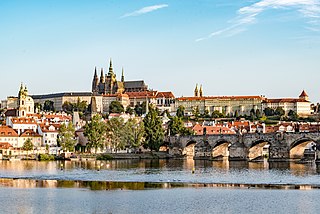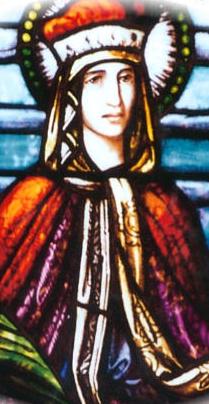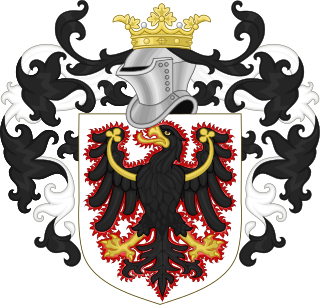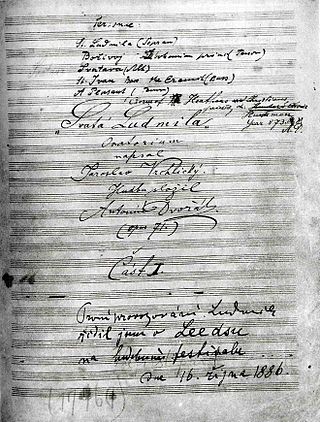Life and work
Domoslav was the Dominican friar, living during the reign of last Přemyslids and probably also in the beginning of the reign of John of Luxembourg. His name was preserved in acrostic of the musical sequence De superna yerarchia. The first letters of the strophes create the words Damozslaus predicator. It is also written in manuscript of The Legend of Saint Ludmila from 1416. Domoslav is also the author of the sequence about Saint Wenceslas Dulce melos cum concentu and rhyming composition Officium o svatém Václavu a svaté Ludmile (Officium about St.Wenceslas and St.Ludmila).
He was the founder of his own school of poetry. At the same time originated many Czech sequences, that were written either directly from him or came from his school, e.g.
The oldest record of texts is a compound of Dražický misál (Missal of Dražice) from 1340, the melody to the first sequence of Dulce melos was found in files of archbishop Arnošt z Pardubic from 1363. Melody to the second sequence was found in "Vyšehradský sborník" (Anthology of Vyšehrad) from the second half of 15th century.

Wenceslaus I, Wenceslas I or Václav the Good was the Prince (kníže) of Bohemia from 921 until his death, probably in 935. According to the legend, he was assassinated by his younger brother, Boleslaus the Cruel.

"Good King Wenceslas" is a Christmas carol that tells a story of a Bohemian king who goes on a journey, braving harsh winter weather, to give alms to a poor peasant on the Feast of Stephen. During the journey, his page is about to give up the struggle against the cold weather, but is enabled to continue by following the king's footprints, step for step, through the deep snow. The legend is based on the life of the Saint Wenceslaus I, Duke of Bohemia (907–935), who was not a king in his lifetime but had that status conferred on him after his death.

Prague Castle is a castle complex in Prague, Czech Republic serving as the official residence and workplace of the president of the Czech Republic. Built in the 9th century, the castle has long served as the seat of power for kings of Bohemia, Holy Roman emperors, and presidents of Czechoslovakia. As such, the term "Prague Castle" or simply the "Castle" or "the Hrad" are often used as metonymy for the president and his staff and advisors. The Bohemian Crown Jewels are kept within a hidden room inside it.

Vyšehrad is a historic fort in Prague, Czech Republic, just over 3 km southeast of Prague Castle, on the east bank of the Vltava River. It was probably built in the 10th century. Inside the fort are the Basilica of St. Peter and St. Paul and the Vyšehrad Cemetery, containing the remains of many famous Czechs, such as Antonín Dvořák, Bedřich Smetana, Karel Čapek, and Alphonse Mucha. It also contains Prague's oldest Rotunda of St. Martin, from the 11th century.

Ludmila of Bohemia is a Czech saint and martyr venerated by the Orthodox and the Roman Catholics. She was born in Mělník as the daughter of the Sorbian prince Slavibor. Saint Ludmila was the grandmother of Saint Wenceslaus, who is widely referred to as Good King Wenceslaus. Saint Ludmila was canonized shortly after her death. As part of the process of canonization, in 925, Wenceslaus moved her remains to St. George's Basilica, Prague.

Davle is a market town in Prague-West District in the Central Bohemian Region of the Czech Republic. It has about 1,800 inhabitants.

The Bohemian crown jewels, also called the Czech crown jewels, include the Crown of Saint Wenceslas, the royal orb and sceptre, the coronation vestments of the Kings of Bohemia, the gold reliquary cross, and St. Wenceslas' sword. They were originally held in Prague and Karlštejn Castle, designed in the 14th century by Matthias of Arras. Since 1791 they have been stored in St. Vitus Cathedral at Prague Castle. Reproductions of the jewels are permanently exhibited in the historical exposition at the former royal palace in the castle. The crown was made for the coronation of Charles IV in 1347, making it the fourth oldest in Europe.

The Přemyslid dynasty or House of Přemysl was a Bohemian royal dynasty that reigned in the Duchy of Bohemia and later Kingdom of Bohemia and Margraviate of Moravia, as well as in parts of Poland, Hungary and Austria.

Hospodine pomiluj ny is the oldest known Czech song. The hymn is a paraphrase of the Kyrie Eleison with deep choral melody. Its text preserves traces of Church Slavonic origin.

Stochov is a town in Kladno District in the Central Bohemian Region of the Czech Republic. It has about 5,400 inhabitants.

Charles Square is a city square in the New Town of Prague, Czech Republic. At roughly 80,550 m² it is one of the largest squares in the world and was the largest town square of the medieval Europe. Founded in 1348 as the main square of the New Town by Charles IV, it was known as Dobytčí trh from the 15th century and finally named after its founder in 1848. The central portion of the square was turned into a park in the 1860s.

Antonín Dvořák composed his oratorio Saint Ludmila for soloists, choir and orchestra, between September 1885 and May 1886. The oratorio was written to a text by the leading Czech poet and writer Jaroslav Vrchlický. Saint Ludmila is Dvořák's third oratorio, and is considered one of his foremost works.

Svatý Jan pod Skalou is a municipality and village in Beroun District in the Central Bohemian Region of the Czech Republic. It has about 200 inhabitants. It is known for the Baroque complex of the former Benedictine monastery, protected as a national cultural monument.
The Sword of Saint Wenceslas or the Coronation Sword of Bohemia is a ceremonial sword used in the Kingdom of Bohemia during coronation ceremonies in Prague. The blade of the Sword dates back to the 10th century, to the times of St. Wenceslaus. Together with the Coronation Cross it is sometimes considered to be a part of the Bohemian Crown Jewels. Unlike the proper crown jewels, the sword and the cross are permanently displayed as part of the Treasury of St. Vitus Cathedral in the Holy Cross Chapel at the Prague Castle.

The Treasury of St. Vitus Cathedral is a collection of ecclesiastical treasures of the Prague Cathedral and is in the property of Prague Cathedral Chapter. It is the largest church treasury in the Czech Republic and one of the most extensive in Europe. The Treasure contains more than 400 items, 139 from them have been displayed since 2012 in a new exhibition in the Chapel of the Holy Rood in Prague Castle.

Josef Pekař was a prominent Czech historian of the turn of 19th and 20th century, professor and rector of Charles University in Prague.

The statue of Saint Wenceslas in Prague, Czech Republic depicts Wenceslaus I, Duke of Bohemia. It is installed at Wenceslas Square.

St. Wenceslas is a 1930 Czechoslovak historical film about Saint Wenceslas by Jan S. Kolár It was the most expensive Czech film to date, with the largest set constructed in Europe to accommodate an all-star cast of over a hundred, together with 5,000 extras for the lavish battle scenes.
















